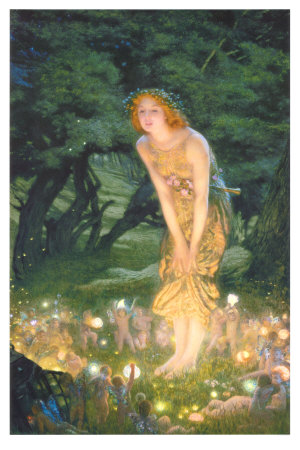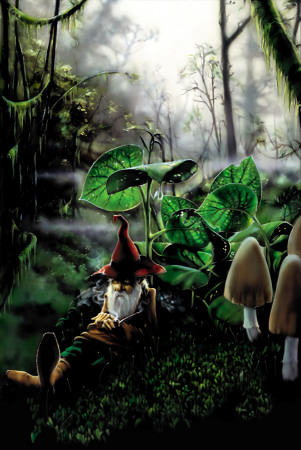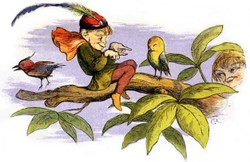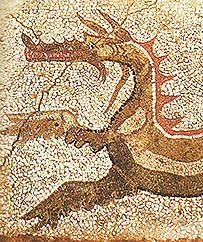In the British Isles, the history of the Little People dates back thousands of years. Often they are grouped together as Elementals, Fae, or fairy (faery) folk, and referred to as the Good People to help protect humans from their wrath, which could be quite malicious. Whether some or all were, or are, based on real beings is a question that has been debated for hundreds of years. The arrival of the Christian Church around A.D. 200 led to these old beliefs being denounced by priests as heathen, pagan or otherwise undesirable, but an undercurrent of belief in the Fae has remained to this day.
The Wee Folk of the British Isles include a wide variety of faeries, including but not limited to elves, pixies, gnomes, brownies, sprites, leprechauns, boggarts and hobs. Unlike supernatural creatures like werewolves or vampires, the Faery Folk were never human. They are often called preternatural beings, meaning they are unusual or outside the norm. The Fae all have a generally human-like appearance — they all walk upright, have hands instead of paws, have a spoken language, wear clothing, love music and so on — but they are not human, and only elves are thought to be able to interbreed with humans. Some Fairy Folk, like leprechauns, hobs, dwarves and gnomes, looked much like very small people, but others, such as pixies, sprites and imps, had a distinctly alien appearance, with large eyes, pointed ears and even wings. Some were believed to live very long lives or even be immortal, dying only if struck down by injury or illness.
Traditionally, some Fae avoided people, while others lived in close proximity with them. Some of the Wee Folk were helpful, but often they were fond of practical jokes and causing trouble. Many of the Fae preferred to go about their business without interacting with people, and most could be quite nasty if they felt they had been wronged. There are tales of them souring milk, causing crops to fail and moving, stealing or breaking items in retaliation for being slighted, insulted or harmed. A few were always dangerous and best left alone.
Elves are found in many cultures. In some, they are tall, ethereal beings, while in others they are very small. Over the centuries, the words elf and fairy have become used as generic names for various small preternatural beings, but elves are generally seen as a separate species of Fae. In Ireland, elves were described as tall and fair, much like (or even part of) the Tuatha de Danann, an ancient race of demi-gods which possibly were based on the actual proto-Celtic people known as Gaels who arrived in Ireland some 4,000 years ago. The Tuatha de Danann were tall and generally fair-haired. Elves could be benign or malevolent, but were not to be interfered with. They were often seen as an ancient race of beings of great power and the leaders of the Fae.










 Versatile Nova Scotia Duck Tolling Retrieverson 08/02/2014
Versatile Nova Scotia Duck Tolling Retrieverson 08/02/2014
 Should You Spay or Neuter Your Puppy?on 08/12/2014
Should You Spay or Neuter Your Puppy?on 08/12/2014
 Horse Racing History: the Preakness Stakeson 05/15/2014
Horse Racing History: the Preakness Stakeson 05/15/2014
 Dinosaurs Will Be On Display in Trenton, Ontario, Canadaon 07/29/2013
Dinosaurs Will Be On Display in Trenton, Ontario, Canadaon 07/29/2013



Comments
What an interesting piece. I enjoyed reading the legends of such intriguing beings. :)K
A very detailed study. Paracelsus believed that the gnomes were a real species that dwelt under the earth, having the ability to pass through rock. This he stated in the fifteenth century, so the belief in the "other" to use the Irish term, is quite modern. In 1970 I met an elderly Irish woman who believed in the "Sidhe" as the folk in Erin call them. In Ireland people still do not disturb the fairy mounds, or fairy forts as they are called.You will note that in fields across Britain you see a solitary hawthorn standing unmolested. This is because it is sacred to the fair folk,whom it is unlucky to cross.
It was only with the "progress" brought by the reformation and the enlightenment that people began to believe that humans are the only rational creatures in the world.